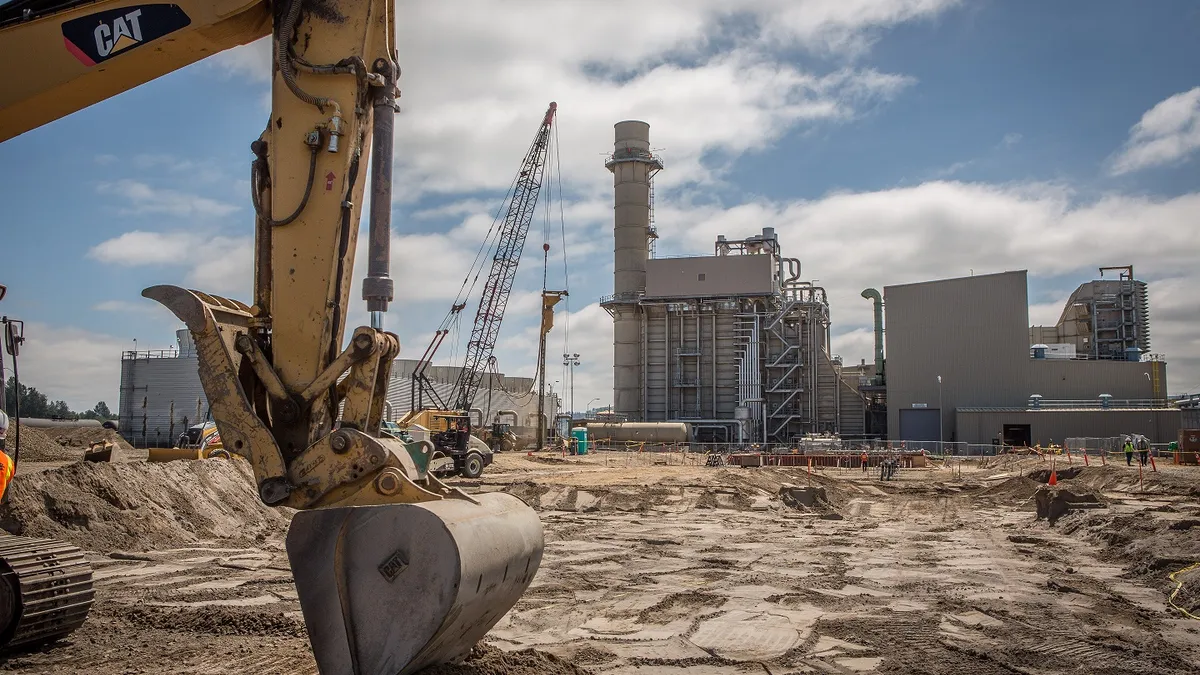Dive Brief:
- Despite the construction industry decelerating, it is not in a decline, according to industry experts who participated in a webinar titled "Is the Construction Expansion Decelerating?" hosted by Dodge Data & Analytics April 3.
- Total construction starts anticipated for the coming year amount to a 3% gain, which, although lower than last year’s 4% rise and more substantial increases in previous years, is still in positive territory.
- Bob Murray, Dodge's chief economist, said that the market is functioning at a decent clip and that despite rising interest rates and material cost and a tight labor market having a dampening effect, those factors won’t put the market into a cyclical decline.
Dive Insight:
Dodge Data & Analytics takes the residential, commercial, institutional and public works sectors into account when analyzing the construction industry's overall health. Institutional building led growth in 2017 with a 14% increase, with transportation terminal construction projects seeing a big uptick, including the New York City's $7.6 billion LaGuardia Airport.
In fact, transit-oriented development is becoming a bigger driver for the industry as demand is strong in suburban markets where residents want to live near transportation connections to cities where jobs are. That, in part, contributed to Dodge amending its 2018 multifamily housing projection, from anticipating a nearly 10% decline to only a 3% decline.
Murray reviewed several categories within the commercial construction market: office realized renewed growth in 2017; warehouse construction is strong; and hotels, which climbed sharply in 2011-2015, had moderate growth in 2016 and now is settling back.
Healthcare in 2017 saw about 83 million square feet built, an increase from the average 68 to 77 million square feet during the previous few years. Large-scale projects were led by the $1.4 billion Penn Medicine Patient Pavilion in Philadelphia last year.
The education sector also is seeing modest growth, as well as amusement and recreation, which includes convention centers, sports arenas, theaters and casino projects.
Economic and legislative issues, of course, are strong influencers to what's happening in the construction market. The passage of the Tax Cuts and Jobs Act of 2017 included stimulative elements, such as corporate and personal income tax reductions, that could be a boon in the near term. Conversely, though, capping state/local income taxes, property taxes and the mortgage interest rate deduction could dampen single-family housing.
At a macroeconomic level, Murray also pointed indicators such as the GDP forecast of 2.8% this year and 2.3% in 2019, as well as potential rises in the federal interest rate this year, the stock market, and job growth, which isn't showing any signs of slowing.
Material prices — particularly steel and aluminum in light of the recent tariffs — will influence, but won't define, the market. Most material prices already were rising throughout 2017, and Murray anticipates prices will have a shaping element, but won't change the construction cycle’s course.
However, when a construction decline ultimately takes place, which could be about 10% starting in late 2019, Murray said it will not be a replay of what happened in 2009.













